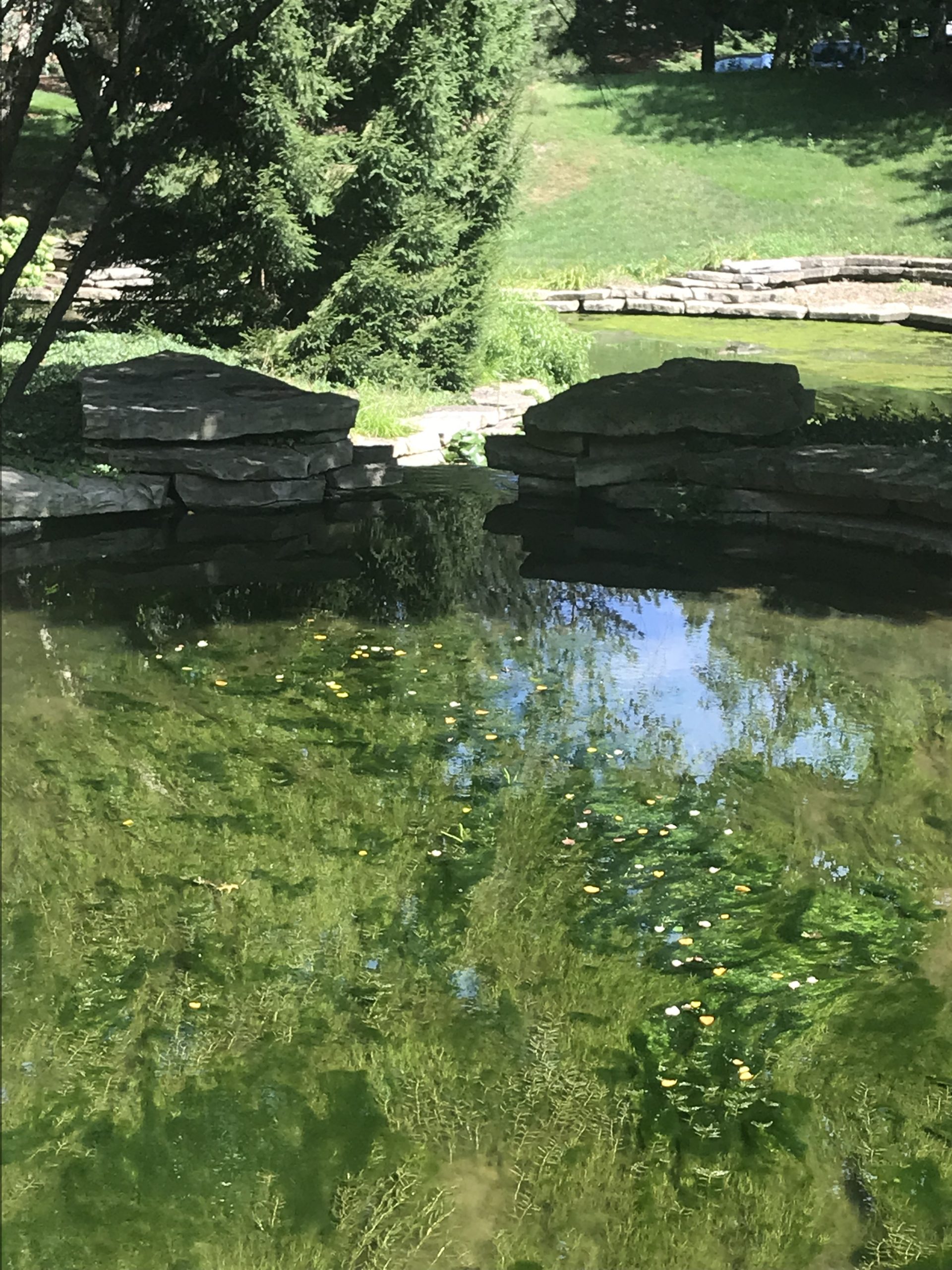Algae is the most basic plant on the planet and can seem like the biggest problem to many pond owners. It can truly seem impossible at times. Algae is particularly heavy in the spring, when temperatures are warming, nutrients are plentiful, and the days are lighter and longer. Here are some suggestions we have to get rid of your pesky algae problems.
Steps for Pond Algae Removal
Physically Remove String Pond Algae by cutting it
This is your best method for removing string algae. Though it may seem dirty, it is essential to do before treating so you can reduce the amount of decay. Don’t remove it by hand as you don’t want to fragment it. Cutting it is a neater way to get the algae out one bit at a time. FNC can handle this project for you as well.
Treat Water and Kill Off Remaining Pond Algae
Some sources suggest using a pond algaecide for Pond Algae Removal, but we never recommend unnatural chemicals even if the labels state they are safe for fish and plants. We stick to natural solutions for algae control and recommend a combination of Aquascape products with bacteria/enzymes to speed up the process. Normal green hair-like or carpet/blanket algae which grows on pond walls and some rocks is best left untouched and completely acceptable. Aquascape Algaecide is a product we highly recommend.
Find the Cause of the Pond Algae Growth
Look for potential causes of string algae by testing your water quality. If algae is growing at a problematic level than it is time to look beyond the algae and mat and deeper into the pond chemistry
. High pH and Phosphorous levels are the leading cause of string algae. Examples of what can cause high pH are the clearing of algae blooms, excessive plant growth, overstocking of fish, and the introduction of foreign materials (untreated concrete, rocks containing limestone or calcium/granite).
The most common cause of high phosphorous is from fertilizers that have leaked into the pond water. Iron is also a major contributor as well as grass clippings that find their way into the pond after mowing the lawn. Scoop green grass blades out immediately.
Add Extra Plants and Remove Decay
A lot of times, algae can be helped by having the proper amount of plants in your pond. Place quick growing and reproducing plants in your pond to increase oxygen content. Make sure you take out the decaying plants first, as they will not help your fight against algae. Choose plants that will grow larger, consume a lot of nutrients, and will not require a lot of upkeep.
We recommend Water Lettuce, Irises, and Cattails for the spring and summer. You can solve many problems as a pond owner by placing plants to out-compete algae and suspend algae for excess nutrients. Just be careful to not add in any plants that already have string algae attached!
Feed Koi & Fish Less to Reduce Excess Nutrients
One of the most common errors by fish pond owners is to overfeed their fish, thus adding excess nutrient to the water. If there is any food left in the pond uneaten, you’ve fed your fish too much. By feeding less you also increase the fishes’ appetite for other substances in the pond. Like algae!
Install a dosing system or UV light.
A dosing system is like an IV for your pond– it can put algae control in your pond on a regular basis. A UV light kills string algae.
If you can’t (or don’t want to) take care of your Pond Algae we certainly can. FNC Ponds specializes in pond algae removal as well as all other water features items in the Dallas, TX area. Contact us to see how we can help you.






